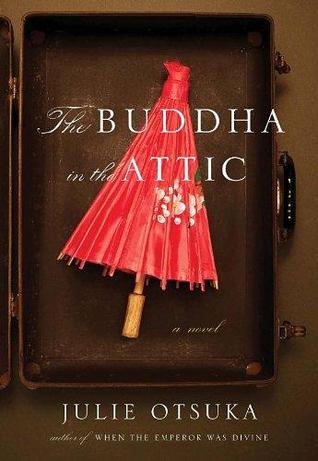I didn't like "Gardens in the Dunes" as much as I liked "Ceremony." "Ceremony" was more experimental, with a non-linear time structure, and also more ambitious in what it was trying to achieve from a technical perspective, in that the physical text of the novel is gradually revealed to the reader as an integral part of the ceremony described in the story of the novel. It invites the reader's participation in the ceremony via the act of reading, rather than asking the reader to be a passive witness to the events as presented.
"Gardens in the Dunes" is a more conventional novel that lacks the meta-textual complexity of "Ceremony," but is ambitious in other ways and always entertaining. I didn't feel the least bit disappointed with "Gardens," not like when I read Monique Truong's "Bitter in the Mouth," the far-inferior sophomore effort from the author of my other favorite novel, "The Book of Salt."
 The story "Gardens" is told from the perspective of multiple characters and incorporates a wide variety of
The story "Gardens" is told from the perspective of multiple characters and incorporates a wide variety of settings, from the Arizona desert to jungles of Brazil to the citron groves of Corsica. It also addresses themes and events outside of the American Indian experience, which surprised me more than it should have. A lot about this book surprised me in ways that made me newly aware of the limits our society places on American Indians, right down to the narrow and rigid narratives we allow them in mainstream literature. I kept expecting bad things to happen according to my own expectations of American Indian lives, but while some bad things do happen, they never happened in the way I expected, and frequently good things happened instead. Families are re-united instead of being torn apart; children live instead of die; dreams come true instead of dying; land is secured, not stolen.
When the Indian Police take the main character, Indigo, away from her sister and put her in the government school, I expected the rest of the novel to be about how horrible the government schools were to the children stolen from their parents and forced to live there. But Indigo escapes to find her older sister, Salt. And I expected the novel to be about her re-capture and punishment in the school, or maybe about the abuse she suffers as she searches for Salt in the lawless desert. But she's taken in by Hattie, a recently-married white woman living with her husband on his citrus farm in the Californian desert. So I expected Hattie to try and force Indigo to be more like a white child, cutting her off from her heritage, but Hattie actually ends up being a Harvard-educated liberal who is a very supportive surrogate mother to Indigo. They go on a trip to Long Island, England and Italy, and I then expected Hattie to want to keep Indigo away from Salt and adopt her as her own child. But Hattie actually returns Indigo to her family, leaving Indigo better off, with both world experience and a trunk full of exotic plants and seeds that she and her sister then plant at the titular garden in the dunes.
This is just one story-line of many that took me by surprise. "Garden in the Dunes" may not be as technically ambitious as "Ceremony," but it more than makes up for that with the ambition of the story itself. I don't know if it was Marmon Silko's intention to play with the reader's expectations the way she did, or if I'm just a lot less enlightened and knowledgeable about the literary traditions of people of color than I think I am, but this book was an eye-opener for me in any case.
The standard cultural narrative is that the American Indians lost everything, and maybe that's a comfortable narrative for the mainstream audience because it absolves us of responsibility toward the current American Indian population. An extinct plant can never be brought back, so there's no need to waste effort or time trying. But a narrative about American Indians who endured and even thrived is trickier to digest because it demands attention be paid to issues that the mainstream considers settled and done with, which is actually quite disrespectful to the people still confronting these supposedly "settled" issues every day (see my review of "The Round House" by Louise Erdrich).
Final Grade: B+. Recommended for those interested in plants, American Indians, travel stories, stories about sisters, and the American West.



